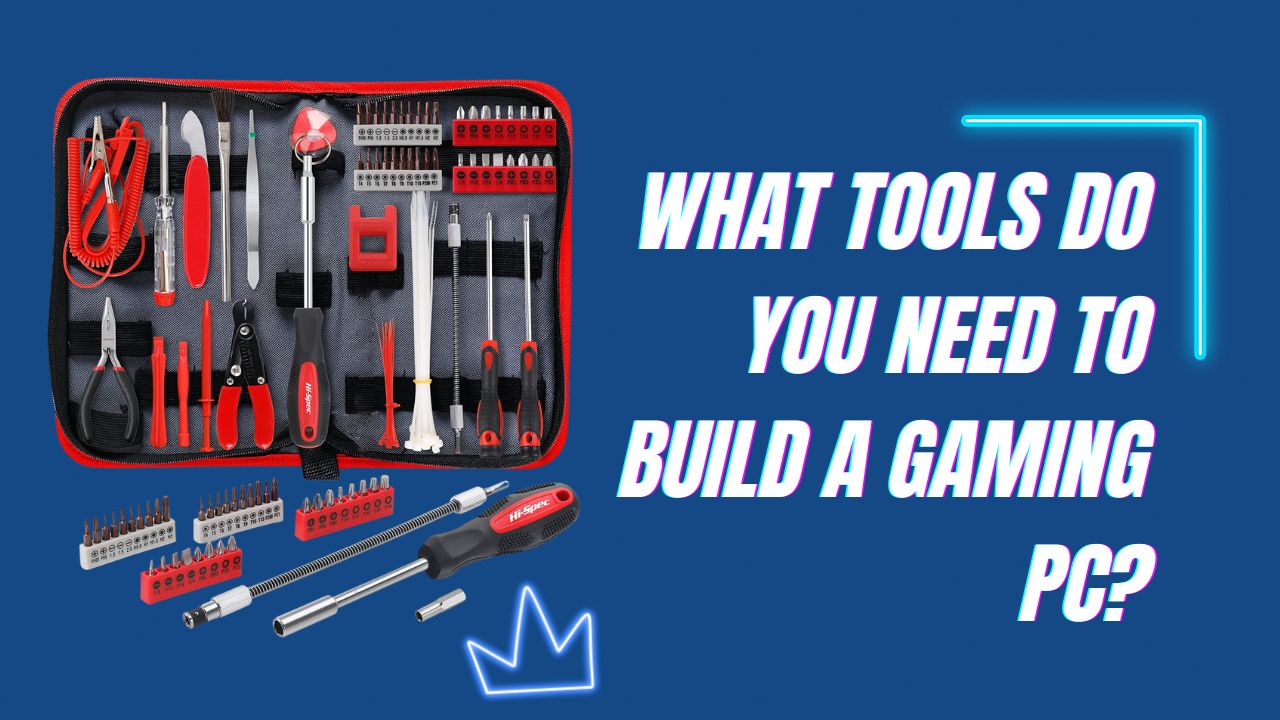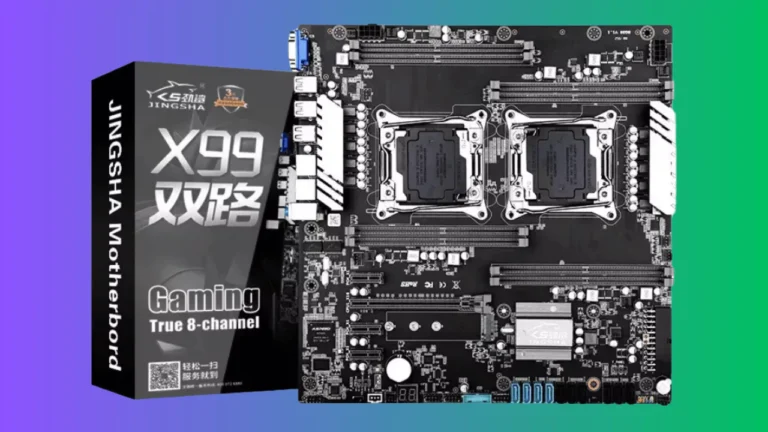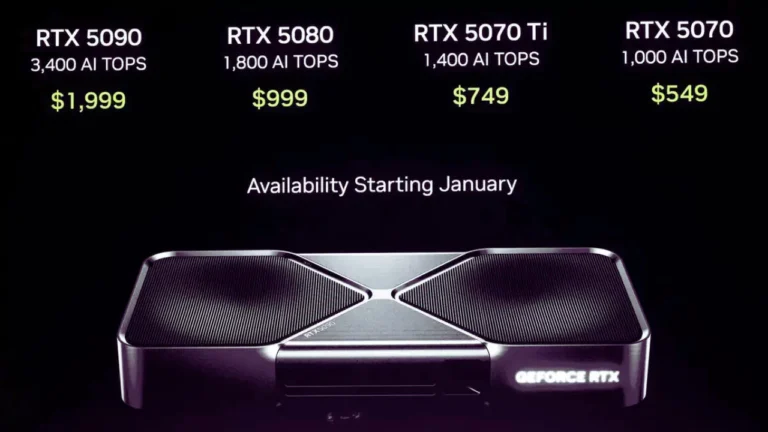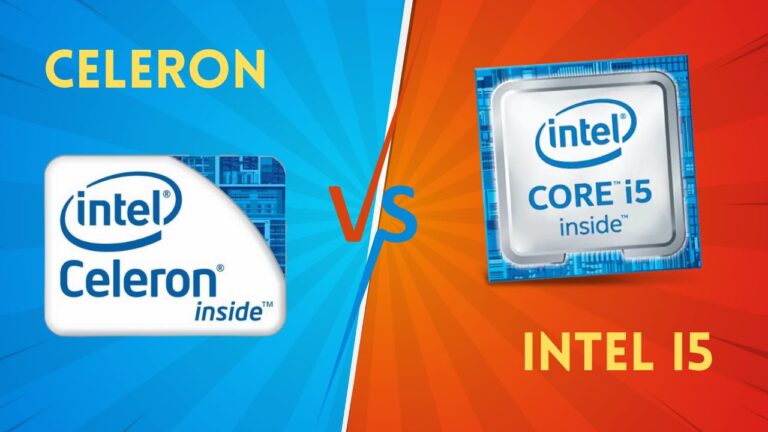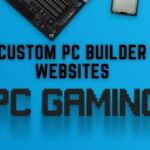Are you looking to build yourself a gaming PC? It’s a daunting process that requires research, patience, and lots of parts. If you’re just getting started, don’t be intimidated – I’m here to show you how easy it can be to build your own gaming rig. In this blog post, I’ll share my personal experience with the tools and parts necessary for constructing your own awesome machine. So get ready to do some shopping – let’s build a killer PC!
Gaming PCs are incredibly powerful rigs that require a range of components to take on the latest titles. If you’re planning on building your own gaming PC, there are certain tools you’ll need to have handy in order for the build to be successful.
In this guide, we’ll walk through some of the essential components and tools you’ll need in order to build a gaming rig from scratch or upgrade an existing one. Having these tools on standby will help make the process simple and ensure that your PC is up and running in no time.
Research
Before you can begin building your own gaming PC, it is important that you first do your research. This may involve researching what kind of gaming system you want to build, reading reviews and customer feedback on the components you are considering buying, as well as watching any relevant videos or tutorials that may assist in the building process.
Additionally, it is important to set a budget for your project so that you can avoid overspending when buying components. Doing research prior to building your gaming PC will help ensure that you have all the necessary tools and supplies and that all of the components in your system are compatible with each other so there will be no issues when attempting to power up the system.
Essential Components
It’s no secret that building your own gaming PC can be a daunting prospect, but it can also be incredibly rewarding. Building a great gaming PC requires careful consideration of all the components involved, from the processor and graphics card to the cooling system and power supply. It’s important to find the right balance of performance, reliability, and affordability in each component, to ensure your gaming PC is capable of providing you with an enjoyable gaming experience.
To start off your build, you’ll need the basics. Essential components for any gaming PC include internal hardware such as a CPU (Central Processing Unit), GPU (Graphics Processing Unit), RAM (Random Access Memory), and storage devices such as HDD (Hard Disk Drive). Your motherboard will also be required to join all these components together, along with its essential BIOS, ports, and slots for expansion cards such as a dedicated graphics card or a network adapter. Additionally, modern motherboards should support socket types such as Intel’s LGA 1151 or AMD’s AM4 sockets for current-generation CPUs.
Powering everything will require you to choose between two primary power supply options: ATX cabinets are limited by spatial constraints while Modular PSUs offer easier cable management when space is not an issue. The wattage rating of your PSU should rely heavily on your hardware specs – higher wattage being suitable for more demanding rigs while lower wattage is better suited in more simple builds where power requirements are minimal.
Earlier we said it’s important to choose the correct balance of performance, reliability, and affordability when selecting components for your build – this means picking parts that both work together effectively yet still fit into your budget. This is usually achieved by striking a fine balance between advanced expensive parts like processors and GPUs, with more economical alternatives like storage drives or input/output peripherals like keyboards or mice. Doing this efficiently allows you to create an effective computer at minimal cost without compromising on performance or quality too drastically – allowing achieve great value from aesthetic changes such as RGB lighting effects or custom cooling solutions that can greatly improve user experience without going over budget.
Optional Components
Along with the necessary components for a gaming PC, there are some optional components you may wish to consider when building. Depending on your budget and needs, adding certain components can provide your system with additional power and improved performance.
- Additional Storage: One way to upgrade performance is by upgrading your storage. The traditional hard drive (HDD) allows for ample storage but lacks read/write speed compared to Solid-State Drives (SSDs). Consumer SSDs typically offer faster boot times and faster loading times in games compared to HDDs, making this upgrade great for gamers needing quick load times.
- Optical Disc Drive: If you’re planning on playing titles or installing games from physical discs, then an optical drive will be necessary. Avoid buying the cheapest option here as they can be unreliable over time.
- Fans: Additional case fans allow more air to be pushed throughout the system while also keeping components from overheating. Generally speaking, having more air accessible within the case helps improve airflow and prolongs component life in the long run.
Choosing the Right Parts
The first step of building a gaming PC is choosing the right individual components. When it comes to what you need, it all depends on your budget, use cases, and preferences. Of course, you’ll need a motherboard and CPU that fit the appropriate socket type – Intel or AMD – depending on which processor you choose. Make sure that the parts meet your requirements and come with a warranty in case something breaks during assembly.
Next, you’ll need to decide on your RAM and storage capacity. Depending on whether you plan to use your PC for gaming only or multitasking as well, 8GB of RAM is typically enough for most applications while 16GB is preferable if you plan intensive tasks like video editing alongside gaming. As for storage, an SSD is always preferred as it runs faster than traditional HDDs but costs more per GB of storage space available. You’ll also want to consider what type of GPU(s) – NVIDIA or AMD – will work best for your needs based on budget and performance expectations.
Lastly, consider what other parts are required such as a powerful power supply unit (PSU), enclosures (casing), fans for cooling down components during long gaming sessions, and other necessary hardware such as thermal paste or RGB lighting strips that add bling to the build but won’t perform better in games. After taking all these factors into consideration, make sure to double-check compatibility between these components before purchasing them so that there won’t be any problems during assembly! Before finalizing your selection of parts be sure also check out reviews from trusted sources in order to get a better idea if they are worth buying or not.
Building the PC
Building a gaming PC is no small feat, but it doesn’t have to be intimidating either. The key is to arm yourself with the proper tools and know-how before starting the process.
First and foremost, you will need a screwdriver. Preferably one that has multiple bits so you can make minor adjustments easily as you go. A basic box cutter or razor blade might also be useful in certain situations when opening hardware bundles or packages. But it is important to keep your blades sharp and change them out frequently to prevent accidents while cutting through thick protective materials and plastic packaging. Additionally, having wire cutters will come in handy when connecting any wires or cords during the building process.
Besides these standard tools, there are some items that should be part of any PC builder’s toolkit if they want a consistent experience building their gaming PC:
- Thermaltake Universal CPU Heatsink Remover
- Anti-Static Mat or Wrist Strap
- Case standoffs and screws
- Small pieces of hardware like zip ties, tie wraps, rubber grommets, etcetera may also prove helpful while putting together the final piece of your gaming rig.
Having these tools on hand before you attempt building your first PCs can make an enormous difference in terms of efficiency and peace of mind during the entire process.
Testing and Troubleshooting
In order to make sure your gaming PC is up to snuff, you will need to conduct some testing and troubleshooting. Before you turn on the power switch make sure all cables and components are installed correctly without any gaps. Connect a monitor, keyboard, and mouse, then plug in the power cable.
Once your system is powered up you should immediately check the BIOS settings and make sure they are correct for your configuration. Set a proper boot sequence so that your computer will start with the required operating system (Windows/Linux). Properly setting up BIOS is essential when it comes to building your own gaming PC.
If possible, run diagnostics programs or benchmarking tools to ensure each component is operating properly. This can also verify the speed of each component as well as confirm that all software components are compatible with one another. Check for firmware updates for each device, especially on recently released systems or new hardware items. The original motherboard box should have a list of device drivers and their locations; download all recommended updates from here first before proceeding further into installing new hardware and software programs such as games.
Once your system seems stable from basic benchmarks, run more rigorous tests by incorporating stress tests into your gaming experiences such as overclocking and heat monitoring analysis tools like MSI Afterburner or Intel Burn Test 3DMark Tests). Compare results with other users online for comparison points; this can help identify potential problems quicker than troubleshooting yourself since chances are other users have experienced something similar in the past. Comparing results over time can also help you find subtle errors that may not be detectable through simple operations alone.
Finally, always back up any data or files prior to running any tests since there’s always a chance frustration while testing could cause harm to user data stored on your computer’s drives!
Conclusion
When it comes to building a gaming PC, there are certain tools that are essential for the process. A screwdriver and an anti-static wrist strap are necessary to open the computer case and install components safely. Other helpful tools include tweezers, pliers, a soldering gun, Phillips head screwdrivers, and an electric drill.
Additionally, if you plan on customizing your PC to fit your own style and preferences, then precision cutting tools may come in handy. For example Dremel tool or an x-acto knife. It’s also helpful to have some other items on hand such as zip ties or cable ties for managing your wires in the computer case and heat shrink tubing for covering exposed wires.
In conclusion, the tools required for building a gaming PC will vary depending on how much customization is desired but some basics are needed for any type of build. Of course, you don’t need all these items but having them can make your build easier and happen faster so it’s always good to be prepared with all these if possible!
FAQs
What do I need to build my gaming PC?
To build a gaming PC, you will need a motherboard, CPU, GPU, RAM, storage (e.g. HDD or SSD), power supply, and a PC case. You may also want to consider adding additional components such as a cooling system, additional storage, and peripherals like a monitor, keyboard, and mouse.
Do I need tools to build a PC?
Tools are not strictly necessary to build a PC, but they can make the process easier. A screwdriver and thermal paste are generally recommended. Some other helpful tools include pliers, tweezers, and a computer tool kit.
Is it cheaper to buy a gaming PC or build it?
It can be cheaper to build a gaming PC, but it depends on the components you choose and the cost of labor. Building a PC also allows you to tailor the components to your specific needs and budget. However, buying a pre-built gaming PC can be more convenient and may come with a warranty. It’s important to compare prices and research the components to find the best option for you.

